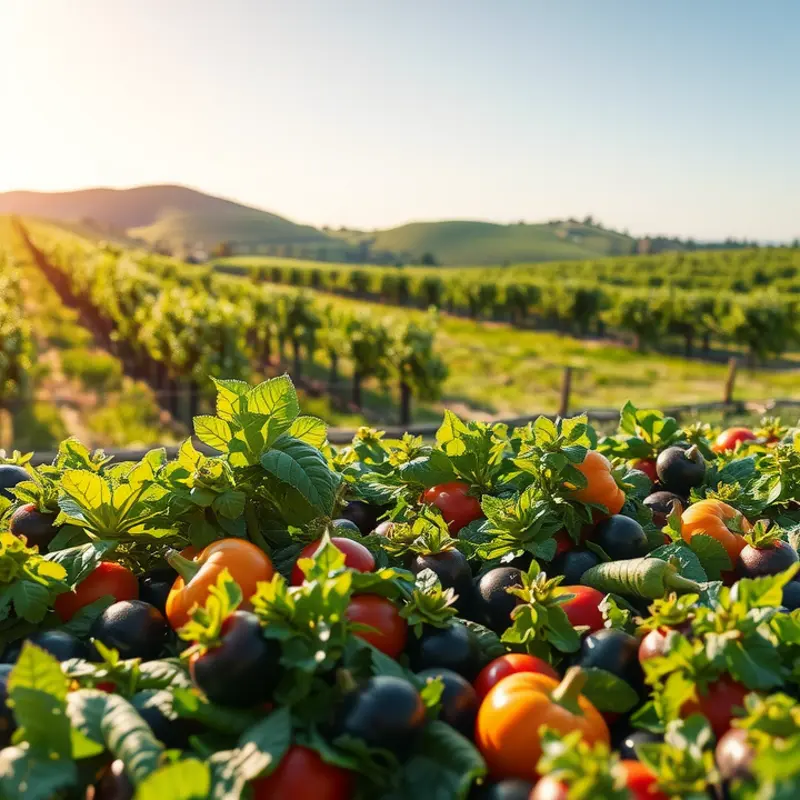Storing cooking oils properly can significantly enhance their shelf life, flavor, and safety. Whether you’re using olive oil, vegetable oil, or specialty oils like sesame or truffle, understanding how to store them correctly is essential for minimizing waste and improving your kitchen management. This guide breaks down essential tips and practical solutions for ensuring your oils stay fresh while optimizing your food storage habits.
Choosing the Right Storage Containers

Proper storage of oils requires careful consideration of the containers you choose. The right container can significantly influence the quality and longevity of your oils. When selecting a storage solution, several factors come into play: material, opacity, and sealability.
Material Matters
The material of the container is crucial. Glass and stainless steel are two popular options. Glass containers are non-reactive, meaning they won’t chemically interact with the oils, preserving their purity. Opt for dark or amber glass to protect oils from harmful light exposure. Stainless steel is another excellent alternative, especially for larger quantities; it’s durable, non-reactive, and shields against light.
Avoid plastic containers as much as possible. Plastics can seep chemicals into oils, especially with prolonged storage or temperature fluctuations. Moreover, plastic is permeable to air, which can accelerate oil deterioration through oxidation.
Opacity Counts
Light is detrimental to oil quality. It speeds up oxidative rancidity, degrading oils and reducing their nutritional value. To mitigate this, choose opaque containers that block light effectively. Dark-colored glass and stainless steel are optimal for this reason. If you do use clear glass, ensure oils are stored in a dark pantry or cabinet.
Sealability Ensures Freshness
The ability to seal containers tightly is crucial. Oxygen is another factor that contributes to oil spoilage, as it aids in the oxidation process. Ensure any chosen container has a tight-fitting lid to limit exposure to air. Look for containers with screw caps or flip tops with snug seals. These closures help maintain the freshness by minimizing air contact.
Practical Container Options
Consider investing in a variety of containers based on your needs. Small bottles are perfect for daily use, allowing easy access without exposing large quantities of oil to air repeatedly. Larger containers are useful for bulk storage, especially if you purchase oils in large quantities and decant them into smaller vessels as needed.
Additionally, reusable pour spouts or pumps fitted onto bottle tops can also be convenient. They allow controlled pouring and minimize exposure time each time you use the oil.
Storage Tips for Varied Oils
Consider the specific storage needs of different types of oils. For instance, oils like extra virgin olive oil require special care. They benefit from darker and cooler storage conditions, so a stainless steel container is optimal. For a deeper understanding of how to integrate healthy oils into your kitchen sustainably, you might explore our guide on creating a Mediterranean chickpea salad.
Choosing the right containers is the foundation of preserving oil quality. By considering material, opacity, and sealability, you ensure these culinary essentials remain fresh, safe, and flavorful for your cooking endeavors.
Optimal Conditions for Oil Storage

Preserving the quality of your cooking oils begins with understanding the best environmental conditions for storage. The primary factors to consider include light exposure, temperature control, and humidity management. Each of these elements plays a pivotal role in maintaining the oils’ freshness and nutritional benefits.
Light Exposure
Direct exposure to light, particularly sunlight, can rapidly degrade the quality of oils. This process, known as photooxidation, alters their chemical composition, resulting in off-flavors and odors. To protect your oils from this degradation, choose containers that are dark or opaque. Glass bottles that are tinted or metal containers work excellently for shielding oils from harmful UV rays. Store these containers in dark cupboards or pantries away from direct sunlight. By managing light exposure, you extend the life and quality of your oils.
Temperature Control
Oils are sensitive to heat; therefore, temperature control is another crucial aspect of proper storage. Most cooking oils are best stored at a cool, consistent temperature, ideally between 14°C to 20°C (57°F to 68°F), which prevents them from becoming rancid. Avoid placing oils near heat sources such as ovens or stovetops, where fluctuations in temperature can occur. For those with a cooler basement or cellar, these locations can provide an excellent environment due to their naturally stable temperature.
Certain oils, such as those high in polyunsaturated fats like flaxseed and walnut oil, benefit from refrigeration. Refrigeration can extend their shelf life and help maintain their delicate flavors. Although these oils may thicken or cloud when chilled, they return to their normal state at room temperature without any negative impact on their taste or usability.
Humidity Management
While oils are less affected by humidity compared to light and temperature, it is still beneficial to store them in a dry environment. High humidity can lead to the growth of mold in unsealed oils, which might not only ruin the oil but also become a health hazard. Ensuring that your storage area is well-ventilated and dry can mitigate this risk, keeping your oils fresh and safe for consumption.
If you often prepare dishes from varied culinary traditions, such as Mediterranean chickpea salad, ensure that each oil type is stored according to its specific requirements. This approach preserves the distinct flavors necessary for authentic cuisine preparation. Explore more about refreshing and healthy Mediterranean dishes here.
In conclusion, achieving optimal conditions for oil storage demands attention to light, temperature, and humidity. By taking a few dedicated steps, you can protect your oils from premature spoilage, maintaining their flavor integrity and nutritional value. The effort invested in proper storage will greatly enhance the quality of your culinary creations.
Final words
Storing oils effectively can enhance their longevity and maintain their quality, ensuring your meals taste fresh and delicious. By choosing the right containers and ensuring optimal storage conditions, you’ll minimize waste and improve your overall food management in the kitchen. Remember to check your oils regularly for color and odor to ensure they haven’t gone rancid. Taking these simple steps can lead to significant improvements in both your cooking experiences and food management practices at home.







